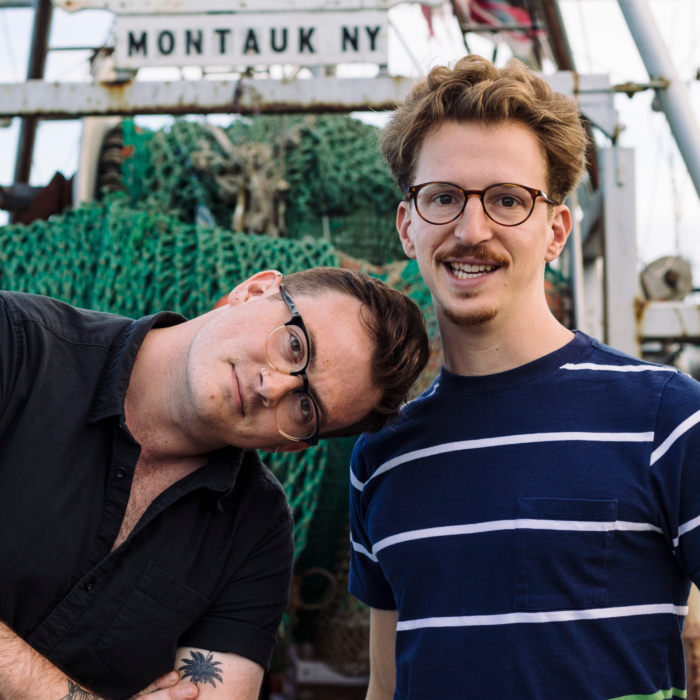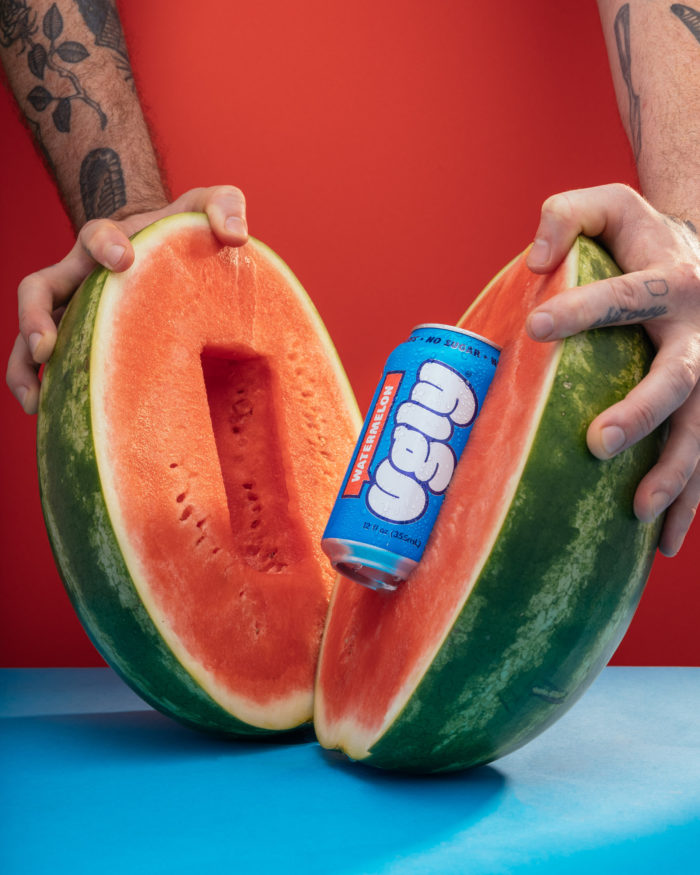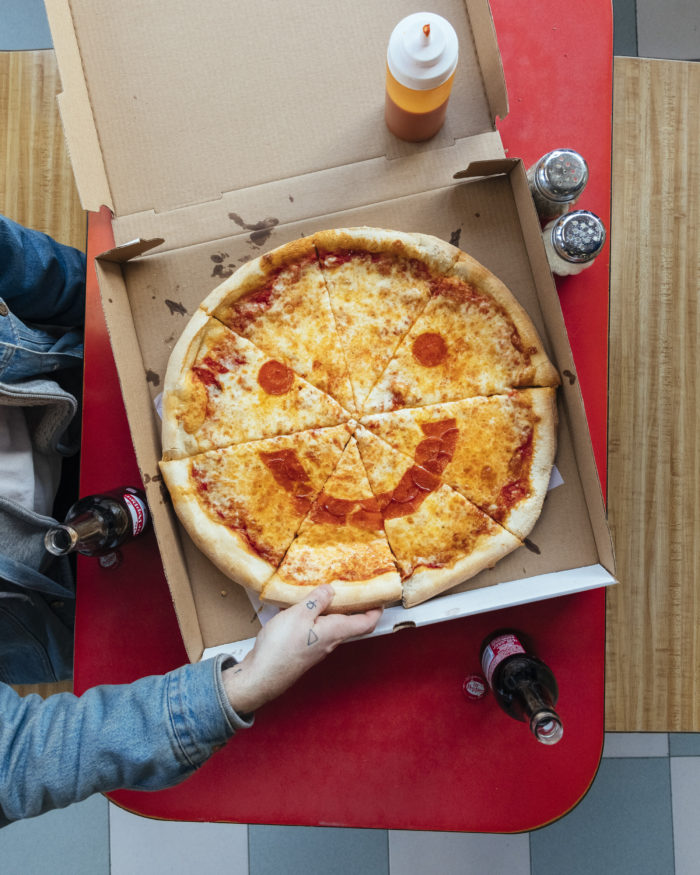By Justin Sanders
Images courtesy of The Brothers Buoy.
So, you want to be an Instagram influencer…
First of all, you’re not alone. In a recent study of Americans age 13 to 38, 86% of participants professed to a willingness to post sponsored content on Instagram for money. And 54% would be happy to become a full-on influencer, if given the opportunity.
It’s easy to see why. Influencers get paid to post on social media, they get to work on their own schedule, and they have a constant excuse to make cool content that expresses their creativity and personality.
It sounds like the dream job, right?
Well, that depends. Like most things that appear easy on the surface (and few things appear easier than the life a typical influencer projects on Instagram), being a successful influencer takes a lot of work. Creating cool content day in and day out is hard enough, and it’s only part of the job – your content has to then reach people in significant numbers before brands will consider sponsoring it. And reaching people on Instagram has never been more difficult.
Creative partners Jackson Cook and Graham Burns, cofounders of the Brooklyn creative content agency The Brothers Buoy, know how hard it is to be an influencer on Instagram. Or, to be more specific, they know how hard it is to be a “micro-influencer,” which is a paid influencer, but with a far smaller follower count than you might expect. In fact, their Instagram account, @thebrothersbuoy, has yet to crack 12,000 followers, which doesn’t seem like much in an Instagram world ruled by celebrities like Cristiano Ronaldo, who has 190 million followers and counting.

The Brothers Buoy cofounders Jackson Cook and Graham Burns.
But then, most brands can’t afford to sponsor content from the world’s most popular athlete (Ronaldo makes almost $1 million per sponsored post), or even, for that matter, a smaller-scale influencer with, say, only a few hundred thousand followers (who tend to make somewhere in the neighborhood of $2,000 to $10,000 per post). Smaller brands on a budget can, however, turn to influencer accounts similar to @thebrothersbuoy, which tend to offer both reasonable rates (between $500 and $800 per post, according to Burns) and a surprisingly good return on that investment. Why? Because micro-influencer accounts tend to refrain from artificially inflating their metrics via tactics such as purchasing fake followers or participating in comment pods, botting, and other schemes. Their followers are, by and large, real people who have subscribed to their feed organically, because they wanted to – which means that any hypothetical product featured by the micro-influencer in a sponsored post gets transmitted to hundreds if not thousands of actual humans who are actually receptive to it.
In a social media landscape overrun with fakery and misinformation, that kind of quality-over-quantity engagement is tremendously valuable to a brand. And The Brothers Buoy have it in spades. They have cultivated a loyal Instagram base of foodies and design enthusiasts through nothing more than the sheer quality of their hilarious and often beautiful content – and had they stuck with their influencer gig, they would likely be killing it right now.
But they didn’t stick with it, and for good reason. This is the story of why.
AN INSTAGRAM STAR IS BORN
The Brothers Buoy was started by Cook and Burns after they, and one other contributor who has since moved on, became friends while working together at an Apple Store in New York City. When a harmonious scheduling confluence found the trio having the same days off, they decided they would start going to brunch together and “start a blog about it so that our friends could read about the different restaurants we went to,” Cook told CreativeFuture. The blog’s original title was “Three Buoys, One Brunch,” only the boys in question quickly realized they didn’t like being “siloed into just one meal of the day.” In the spirit of culinary variety, the word “brunch” was removed from the title, and @thebrothersbuoy was born. Shortly thereafter, their primary content feed migrated from the blog to Instagram.

By 2013, when the project began, food-based social media was already becoming a well-worn trope. But Cook and Burns had two things going for them that made them rise to the top of the growing content ocean. The first thing was that Instagram was only just starting to take off. In September 2013, the platform hit 150 million users – a hefty sum to be sure, but far removed from its current total of more than 1 billion. When the site became the primary outlet for the Brothers’ funny, beautifully composed posts about New York area eateries, it was still possible to gain a significant following in categories that are now beyond saturated. In those halcyon days, a newcomer who wasn’t already a celebrity with a built-in fanbase could still build a following without the rigamarole of constant outreach and engagement.
Of course, your content still had to be engaging – which brings us to the other thing the Brothers had going for them: they were very, very good at making engaging content. Burns is a film school graduate and Cook has a degree in graphic design. Both taught classes in photo and film editing, and other technical skills, while employed at the Apple Store. They are trained in the art of crafting powerful imagery that tells a gripping story. And, as their Instagram account began to take off, and they found themselves at the center of a growing food influencer community, they began to realize they were somewhat unique in this regard, and that they could leverage it.
“One of the things that we realized when we were working with all of these people in the food influencer space is that a lot of them – most of them, really – aren’t photographers,” Cook said. “We saw that and were like, ‘let’s get better at this.’ We tried to get more and more creative and take different types of photos and level up our skills every time we went out. Whereas the rest of the community – while it does have some good artists – is mostly made up of folks who are in it for the free stuff, and they don’t see any reason to level up their skills at all.”
The Brothers Buoy didn’t post as frequently as most of their food influencer counterparts, but they posted with great care, meticulously planning and composing shots behind the scenes. Their high-quality feed began to draw interest and their followers went up. Marketing blogs began including them on roundups of micro-influencers whom brands would be wise to partner with. Food and drink brands started reaching out and paying them to feature their content in posts. They were living the dream. They were paid influencers on the cusp of something big. They could have leaned into it, working to send their follower count ever higher, maybe even signing with an influencer agency who would help them grow their traffic and connect them to bigger and bigger brands.
But the Brothers didn’t have the stomach for it. Or maybe a better way to put it is, they had a hunger for something more than just using their ample creativity to shill products in the Instagram food category.
Somewhere along their journey, Cook had taken on a job at a New York marketplace, Urbanspace, where different vendors rented out floor space to hawk their wares. Over time, he came to manage the place. The role required him to see “both sides of the industry,” he said. “I was working with PR companies to help them organize events at the market where they would bring in Instagram influencers to photograph the new restaurants that were opening in the space – and then I would also be talking to the vendors after these events. And the vendors would often be really unsatisfied with the work that was being created.”
Cook had known all along that he and Burns could do something more than the average influencer with a smartphone. Now, it was becoming clear that the brands sponsoring those influencers wanted something more as well.
“We had been kicking this idea around for a little bit where we thought we could maybe be charging people for creating content around food,” he said. “We realized there was a need for it. These small businesses wanted content that was not made by influencers. They wanted a reasonably priced alternative, and that’s kind of where the agency came from.”
THE PIVOT
When Cook says “agency,” he is referring not only to what has become the Brothers’ thriving creative content studio, but to the philosophical notion of agency – the act of exerting power over one’s own creative destiny.
Today, @thebrothersbuoy Instagram account lives on, but it is no longer a content generator in its own right. Instead, it is a place to showcase work from the creative agency’s portfolio of commissioned client work. The Brothers still receive requests to do influencer work, but they turn them down now. Their mission is not to be sponsored by brands but to partner with them in crafting a marketing campaign from the ground up. It’s a lot more lucrative than being a micro-influencer, and it lets them tell more interesting stories.
“We just came to the realization that being influencers is not something that we ultimately care about doing,” Burns said. “It’s not as creatively fulfilling. Working with a client, you have a concept that you’re pitching them, there is a back and forth, and then you’re hiring a crew, setting up shoot days, and really generating stuff.”

Both Burns and Cook believe that The Brothers Buoy got out of influencing at the right time. They suspect that Instagram “goes through cycles where a category such as food is big, or architecture, or now style, travel, etc.,” Cook said. “We were there in the middle of that, where we were posting stuff and getting, like, 800 likes with less than 10,000 followers. The ratios were nuts, and you see these opportunities start to happen. But then they taper off and you are like, ‘why?’”
Theories abound about Instagram’s algorithmic whims and how they affect what content people see, but in the case of The Brothers Buoy, it seems pretty clear why their traffic started to dip: they just didn’t want to play the influencer game.
“People used to be able to find and nurture their audience pretty easily on Instagram,” said Cook. “It’s just not that easy anymore. It takes a lot of clicking through people’s profiles, scrolling through their accounts, and commenting on people’s posts. You have to do some real grunt work to find your audience these days, and to create growth. You have to DO the thing.”
What’s more, unless you are offering something “that no one else is doing,” he continued, “there is no choice but to post all the time. You have to. And if you do that, you’re going to sacrifice the quality of your work.”
The Brothers Buoy weren’t willing to sacrifice. They’re too imaginative, too meticulous, and too interested in collaboration and connection. One of their favorite parts of running an agency is simply the process of sitting down with potential clients and working with them to hammer out a campaign that reflects their values and their business.
“A lot of times clients can be really apprehensive about reaching out to an agency at all,” Burns said. “Sometimes they don’t know exactly how to communicate what they want, and it’s fun to sit with them and figure it out, and then say, ‘okay, how about this,’ and see their faces light up over the fact that other people understand what they’re trying to do.”
“It’s that first moment of really building trust and rapport with a client,” Cook added. “It’s exciting to start to see them gain confidence in our abilities.”
Establishing a roster of happy, repeat customers and honing a collection of excellent original work outside of Instagram is not only, according to Cook, “more sustainable ultimately” than being an influencer, but it keeps you in the driver’s seat of your own career. By design, Instagram makes it easy to forget that the company can do anything they want with your content, including give it away, sell it, or even erase it from existence.
“What’s crazy is that people’s entire bodies of work are on a platform that could just disappear tomorrow, and they would have nothing to show for it,” Cook said. “That was one of the reasons why we were so desperate to figure out some way of moving on – because who knows what Instagram’s future is? But even if it were to go away, people and brands are still going to need photos for their website, or a video, or an advertisement. And now we can offer that on our own terms.”
Though more people than ever before want to make money as influencers, it’s harder than ever to make an honest living at it. For those determined to try anyway, Burns recommends approaching influencing as an opportunity for professional growth and connection, rather than as a career in and of itself.

THE PHILOSOPHY OF INFLUENCE
“Aside from refining your work and making as much as you can, find your people – people who look up to you, but also people that you look up to,” he said, “and involve yourself in that community. Follower count should not be the end goal on Instagram. Instead, use it as a place to display your work and connect with other people, then turn those connections into collaborations or real-life meetings or events. That’s where it’s the most powerful, in the way it allows these direct lines of communication to brands and other talented people that you would not otherwise have the ability to contact. It’s the ultimate portfolio.”
For The Brothers Buoy, the notion of “influence” as a revenue stream can only take you so far, but as a creative philosophy, its possibilities are limitless.
“Design is cannibalism,” Cook said. “You are influenced by people all over the place, so your work turns into an amalgamation of your influences. We try to bring our style to everything that we do, but we’re being influenced by others and I would hope that we will influence other people in turn.”
The dirty secret of being an influencer is that, whether it becomes a lucrative source of revenue or not, you are ceding control of your creative output and, in many ways, your life, to a massive corporation who is only interested in your brilliant content so far as it can profit from it. The Brothers Buoy offer a different path: whatever your creative talent is – be it filmmaking, photography, painting, etc. – let your influencer content be an opportunity to learn and improve and connect.
Regardless of your creative approach, let your Instagram content stand for you, not vice versa. That is how, as an influencer, you can truly #StandCreative.



